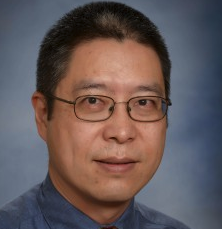Talk 1
In the past decade, computer systems and chips have played a key role in the success of AI. Our vision in Google Brain's ML for Systems team is to use AI to transform the way systems and chips are designed. Many core problems in systems and hardware design are combinatorial optimization or decision making tasks with state and actions sizes that are orders of magnitude larger than common AI benchmarks in robotics and games. In this talk, we will go over some of our research on tackling such optimization problems. First, we talk about our work on deep reinforcement learning models that learn to do computational resource allocation, a combinatorial optimization problem that repeatedly appears in systems. Our method is end-to-end and abstracts away the complexity of the underlying optimization space; the RL agent learns the implicit tradeoffs between computation and communication of the underlying resources and optimizes the allocation using only the true reward function (e.g., the runtime of the generated allocation). We will then discuss our work on optimizing chip placement with reinforcement learning. Our approach has the ability to learn from past experience and improve over time. To enable our RL policy to generalize to unseen blocks. Our objective is to minimize PPA (power, performance, and area), and we show that, in under 6 hours, our method can generate placements that are superhuman or comparable on modern accelerator chips, whereas existing baselines require human experts in the loop and can take several weeks.
Google Brain
Azalia Mirhoseini is a Senior Research Scientist at Google Brain. She is the co-founder/tech-lead of the Machine Learning for Systems Team at Brain where they focus on deep reinforcement learning based approaches to solve problems in computer systems and metalearning. She has a Ph.D. in Electrical and Computer Engineering from Rice University. She has received a number of awards, including the MIT Technology Review 35 under 35 award, the Best Ph.D. Thesis Award at Rice and a Gold Medal in the National Math Olympiad in Iran. Her work has been covered in various media outlets including MIT Technology Review and IEEE Spectrum.

Google Brain
Anna Goldie is a Senior Software Engineer at Google Brain and co-founder/tech-lead of the Machine Learning for Systems Team, which focuses on deep reinforcement learning approaches to problems in computer systems. She is also a PhD student in the Stanford NLP Group, where she is advised by Professor Chris Manning. At MIT, she earned a Masters of Computer Science, Bachelors of Computer Science, and Bachelors of Linguistics. She speaks fluent Mandarin, Japanese, and French, as well as conversational Spanish, Italian, German, and Korean. She has given high-profile keynotes in Mandarin Chinese, and her work has been covered in various media outlets, including MIT Technology Review and IEEE Spectrum.




